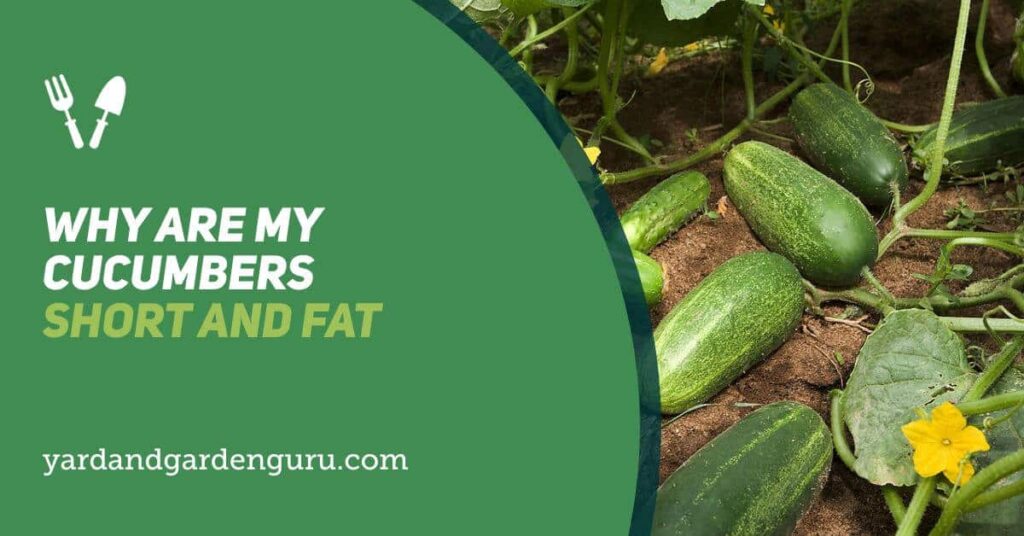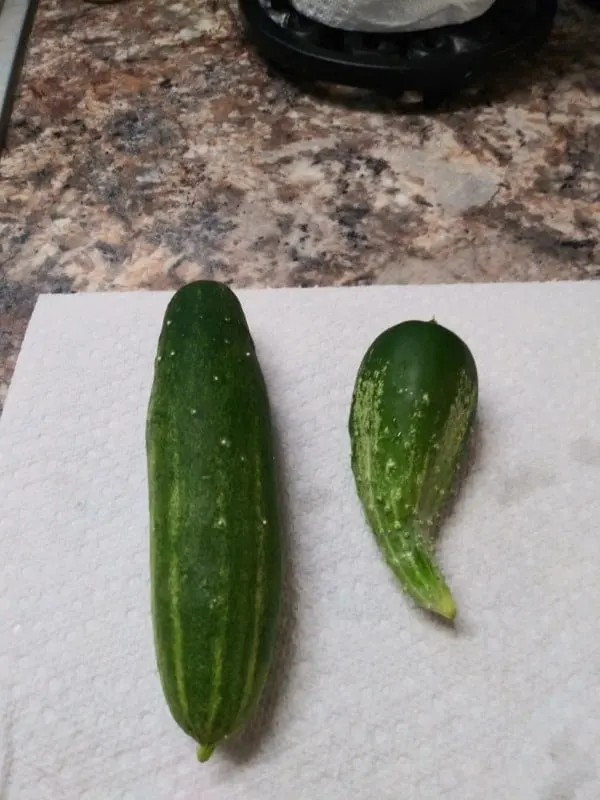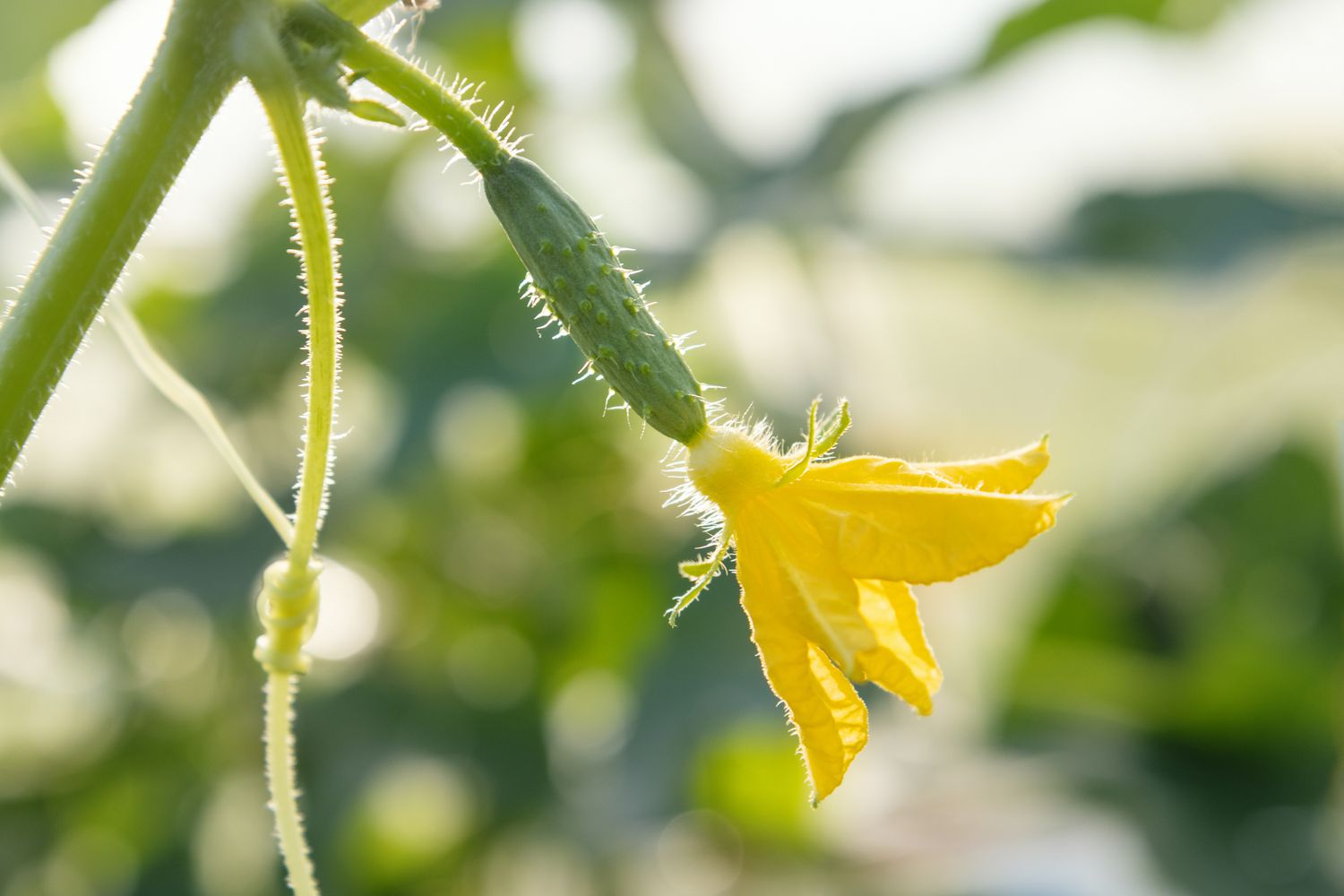So you’ve just harvested your cucumbers, and to your surprise, they are short and fat instead of long and slender. Don’t worry, it’s not a random mutation or something you did wrong in your garden. In fact, there is a scientific reason behind these peculiar shapes. The size and shape of cucumbers are determined by a variety of factors, including genetics, environmental conditions, and pollination. In this article, we will unravel the science behind short and fat cucumbers, exploring the role played by these factors and shedding light on the mystery of your unique harvest.
The Science behind Short and Fat Cucumbers
Have you ever wondered why your cucumbers are coming out short and fat instead of long and slender? There are many factors that can contribute to the unusual shape of cucumbers. In this article, we will explore the various scientific reasons behind this phenomenon and provide insight into how you can address these issues to achieve the desired cucumber shape.

Genetics and Growing Conditions
When it comes to cucumber growth, genetics play a crucial role. Different cucumber varieties have unique genetic traits that can affect their shape and size. Plant breeding also plays a significant role in shaping the characteristics of cucumbers. Breeders select and cross plants with desirable traits to create new varieties. Therefore, the selection of seeds or cultivars can have a direct impact on the shape of your cucumbers.
Aside from genetics, growing conditions such as soil pH and composition, temperature requirements, and sunlight exposure can also influence cucumber growth. Cucumbers thrive in well-drained soil with a pH between 6 and 7.5. They prefer temperatures between 70°F and 90°F, and they require ample sunlight exposure.
Plant Hormones and Growth
Plant hormones play a vital role in regulating the growth and development of cucumbers. Auxins, for example, promote cell elongation, which contributes to the overall shape of the fruit. Gibberellins, another plant hormone, stimulate cell elongation as well. Cytokinins, on the other hand, are responsible for cell division, which directly affects the overall size of cucumbers.
Abscisic acid is involved in seed dormancy, while ethylene plays a critical role in fruit development. Imbalances in these hormones can lead to irregular growth patterns and affect the final shape and size of cucumbers.

Environmental Factors
Environmental factors can significantly impact cucumber growth and shape. Extreme temperatures, such as excessive heat or cold spells, can stress the plants and affect their growth patterns. Insufficient water availability or drought stress can also lead to stunted growth and affect the shape of the cucumbers.
Humidity levels can contribute to the development of fungal diseases, which can further hinder cucumber growth. Additionally, strong wind exposure can damage the plants and inhibit proper growth.
Pest and Disease Infestations
Pests and diseases can wreak havoc on cucumber plants, ultimately affecting their shape and size. Common cucumber pests include aphids, cucumber beetles, and spider mites. These pests feed on the plants and can cause significant damage, leading to stunted growth and misshapen cucumbers.
Fungal diseases, such as powdery mildew and downy mildew, can also impact cucumber growth. These diseases thrive in high humidity conditions and can cause the leaves to wither and affect fruit development. Viral and bacterial infections can also lead to stunted growth and abnormal cucumber shapes.
Implementing proper control and prevention measures, such as regular monitoring, organic pest control methods, and good sanitation practices, can help mitigate the impact of pests and diseases on cucumber growth.

Pollination Issues
Pollination plays a critical role in the development of cucumbers. Proper pollination ensures that the fruits develop fully and consistently. Factors such as inadequate pollinators, poor weather conditions, or lack of viable pollen can result in poor pollination, leading to misshapen cucumbers.
Bees and other pollinators, such as butterflies and bumblebees, are essential for effective pollination. Ensuring a suitable environment for these pollinators is crucial. In cases where pollinators are scarce, hand pollination techniques can be employed to increase the chances of successful pollination.
Signs of poor pollination include irregular shapes and uneven growth in cucumbers. Monitoring these signs can help identify potential pollination issues and enable corrective measures to be taken.
Varietal Characteristics
The choice of cucumber varieties or cultivars can significantly influence the shape and size of the cucumbers produced. Determinant cucumbers are compact and produce fruits all at once, resulting in shorter, thicker cucumbers. Indeterminant varieties, on the other hand, produce fruits continuously over a more extended period, resulting in longer and thinner cucumbers.
Furthermore, the selection of seeds from reliable suppliers can ensure that you are starting with high-quality genetics, leading to more desirable cucumber shapes.

Nutrient Deficiencies
Imbalances in nutrient levels can also impact cucumber growth and shape. Macronutrients, such as nitrogen, phosphorus, and potassium, are essential for overall plant health and growth. If these nutrients are deficient, it can result in stunted growth and abnormal shapes.
Micronutrients, including iron, manganese, and zinc, are equally important for healthy cucumber plants. Deficiencies in these micronutrients can manifest as distorted growth patterns, affecting the final shape of the cucumbers.
Implementing proper fertilization practices and providing the necessary nutrients can help address deficiencies and support optimal cucumber growth.
Watering and Irrigation
Proper watering and irrigation practices are crucial for cucumber growth and shape. Overwatering or underwatering can have detrimental effects on the plants. Overwatering can lead to root rot, nutrient leaching, and stunted growth. Underwatering, on the other hand, can cause wilting, stress, and misshapen cucumbers.
Ensuring proper drainage is essential to prevent waterlogging and promote healthy root development. Additionally, utilizing drip irrigation systems and mulching can help maintain optimal soil moisture levels and promote consistent cucumber growth.

Pruning and Training Techniques
Pruning and training techniques can play a part in shaping cucumbers. Pruning lateral shoots can redirect the plant’s energy towards fruit development and promote better shape and size. Training techniques, such as trellising, can provide support and allow for better air circulation, reducing the risk of diseases and fostering healthier growth.
By implementing appropriate pruning and training techniques, you can help optimize cucumber shape and enhance overall plant health.
Harvesting Practices
Knowing the right time to harvest cucumbers is crucial for obtaining the desired shape and size. Delayed or premature harvesting can result in misshapen cucumbers. For optimal results, cucumbers should be harvested when they reach the desired size and firmness.
Proper harvesting techniques, such as using clean and sharp tools to avoid damage, can help preserve the shape and quality of the cucumbers. Storing and handling cucumbers correctly after harvest is also essential to maintain their shape and freshness.
In conclusion, achieving long and slender cucumbers requires considering various factors. Genetics, growing conditions, plant hormones, environmental factors, pests and diseases, pollination, and harvesting practices all affect the shape and size of cucumbers. By understanding these factors and implementing suitable techniques, you can optimize cucumber growth and enjoy bountiful harvests of the desired shape and size. Happy growing!



